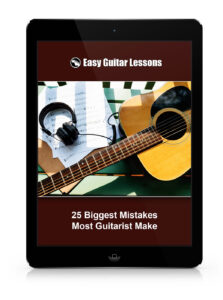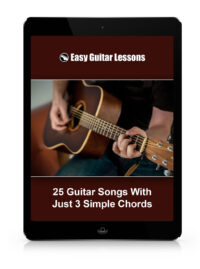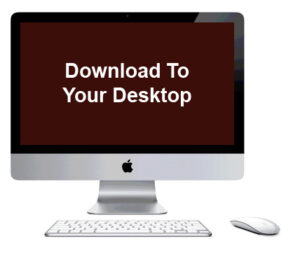Jazz Guitar Mastery
Welcome
Hello, Welcome my name is Gabriel Leopardi and this is the acoustic course!
If you already have a basic understanding of the guitar and can play a few chords, this course is perfect for you.
We’ll explore all the essential techniques and resources that will help you get the most out of your acoustic guitar, whether you want to play your favorite songs or create your own music.
We’ll also cover commonly used chord progressions and apply various strumming patterns.
We’ll learn how to add melodies to chords, including slash chords, and provide examples of their usage.
Additionally, we will delve into the fingerstyle technique, which is crucial for acoustic guitar, and explore different patterns to enhance your chord playing.
Moreover, we will introduce the steady bass technique and apply it to blues rhythm, followed by working on a 12-bar blues progression.
Each concept will be accompanied by a dedicated practice section, where you will find exercises played at both slow and regular tempos, with the assistance of a metronome and backing tracks.
We have an exciting journey ahead, so let’s dive right in and get started!
Em to G Strum
In this lesson, we will focus on a highly utilized chord progression.
The chords we will be working with are Em and G.
Understanding and mastering these chords is crucial for several reasons.
Firstly, Em is a fundamental and commonly used chord that every guitarist should be familiar with.
It serves as a building block for many songs across various genres.

Secondly, G is slightly more complex, but it’s essential to learn and become proficient in playing it.
G chord is extensively used in countless songs, making it a valuable addition to your repertoire.

To effectively learn these chords, it’s important to pay attention to their finger positions and practice playing them correctly.
Take your time to familiarize yourself with the Em and G shapes, ensuring that each note rings out clearly without any muted or buzzing strings.
Start by practicing each chord individually, strumming each string to achieve a clean sound.
Once you are comfortable with playing Em and G separately, the next step is to seamlessly transition between them.
Practice moving from Em to G and vice versa, focusing on maintaining a smooth and fluid motion.
It may feel a bit challenging at first, but with consistent practice, you’ll develop muscle memory and the ability to switch between these chords effortlessly.
In addition to chord transitions, it’s important to work on your strumming technique.
Experiment with various strumming patterns and rhythms using your right hand.
Start with simple downstrokes and gradually incorporate upstrokes, syncopation, and other strumming variations to add texture and dynamics to your playing.
Remember, consistent practice is key to internalizing these concepts.
Set aside dedicated practice time each day to work on chord transitions and strumming patterns.
You can also enhance your practice sessions by playing along with songs or backing tracks that incorporate Em and G chords.
By mastering these chord shapes, smooth transitions, and diverse strumming patterns, you will not only expand your repertoire but also gain a solid foundation for tackling a wide range of songs on the guitar.
So, take your time, practice diligently, and enjoy the process of honing your skills!
Supplies and Essential
Realistically, all you absolutely have to have to start drawing is paper and pencil.
However, there are a few key supplies that are very handy to have in addition to those.
Erasers. A kneaded eraser is an absolute must, and is great for lightening areas, as well as pulling out details and highlights if the tone isn’t too dark.
If the tone is dark, or bright whites are required, an electric eraser will also be of great use.
Blenders. Get a variety of sizes of stomps (also called “stumps”) and tortillons.
These are rolled or compressed paper, and are very useful for smoothing tone, darkening passes, and removing excess charcoal or graphite from the paper.
You may also want to experiment with other blending tools, such as soft paintbrushes, chamois cloth, felt, and facial tissues.
Graphite and charcoal. These two basic mediums come in a surprisingly large array of options, and are available as either sticks or pencils in hardnesses ranging from very hard (9H or so) to very soft (9B, or even E).
You will probably want a range of 4 or 5 pencils in graphite, charcoal, or both to start. I recommend a 2H, HB, 4B, and 6B
Supplies and Essential
Realistically, all you absolutely have to have to start drawing is paper and pencil.
However, there are a few key supplies that are very handy to have in addition to those.
Erasers. A kneaded eraser is an absolute must, and is great for lightening areas, as well as pulling out details and highlights if the tone isn’t too dark.
If the tone is dark, or bright whites are required, an electric eraser will also be of great use.
Blenders. Get a variety of sizes of stomps (also called “stumps”) and tortillons.
These are rolled or compressed paper, and are very useful for smoothing tone, darkening passes, and removing excess charcoal or graphite from the paper.
You may also want to experiment with other blending tools, such as soft paintbrushes, chamois cloth, felt, and facial tissues.
Graphite and charcoal. These two basic mediums come in a surprisingly large array of options, and are available as either sticks or pencils in hardnesses ranging from very hard (9H or so) to very soft (9B, or even E).
You will probably want a range of 4 or 5 pencils in graphite, charcoal, or both to start. I recommend a 2H, HB, 4B, and 6B
Supplies and Essential
Realistically, all you absolutely have to have to start drawing is paper and pencil.
However, there are a few key supplies that are very handy to have in addition to those.
Erasers. A kneaded eraser is an absolute must, and is great for lightening areas, as well as pulling out details and highlights if the tone isn’t too dark.
If the tone is dark, or bright whites are required, an electric eraser will also be of great use.
Blenders. Get a variety of sizes of stomps (also called “stumps”) and tortillons.
These are rolled or compressed paper, and are very useful for smoothing tone, darkening passes, and removing excess charcoal or graphite from the paper.
You may also want to experiment with other blending tools, such as soft paintbrushes, chamois cloth, felt, and facial tissues.
Graphite and charcoal. These two basic mediums come in a surprisingly large array of options, and are available as either sticks or pencils in hardnesses ranging from very hard (9H or so) to very soft (9B, or even E).
You will probably want a range of 4 or 5 pencils in graphite, charcoal, or both to start. I recommend a 2H, HB, 4B, and 6B
Supplies and Essential
Realistically, all you absolutely have to have to start drawing is paper and pencil.
However, there are a few key supplies that are very handy to have in addition to those.
Erasers. A kneaded eraser is an absolute must, and is great for lightening areas, as well as pulling out details and highlights if the tone isn’t too dark.
If the tone is dark, or bright whites are required, an electric eraser will also be of great use.
Blenders. Get a variety of sizes of stomps (also called “stumps”) and tortillons.
These are rolled or compressed paper, and are very useful for smoothing tone, darkening passes, and removing excess charcoal or graphite from the paper.
You may also want to experiment with other blending tools, such as soft paintbrushes, chamois cloth, felt, and facial tissues.
Graphite and charcoal. These two basic mediums come in a surprisingly large array of options, and are available as either sticks or pencils in hardnesses ranging from very hard (9H or so) to very soft (9B, or even E).
You will probably want a range of 4 or 5 pencils in graphite, charcoal, or both to start. I recommend a 2H, HB, 4B, and 6B
Supplies and Essential
Realistically, all you absolutely have to have to start drawing is paper and pencil.
However, there are a few key supplies that are very handy to have in addition to those.
Erasers. A kneaded eraser is an absolute must, and is great for lightening areas, as well as pulling out details and highlights if the tone isn’t too dark.
If the tone is dark, or bright whites are required, an electric eraser will also be of great use.
Blenders. Get a variety of sizes of stomps (also called “stumps”) and tortillons.
These are rolled or compressed paper, and are very useful for smoothing tone, darkening passes, and removing excess charcoal or graphite from the paper.
You may also want to experiment with other blending tools, such as soft paintbrushes, chamois cloth, felt, and facial tissues.
Graphite and charcoal. These two basic mediums come in a surprisingly large array of options, and are available as either sticks or pencils in hardnesses ranging from very hard (9H or so) to very soft (9B, or even E).
You will probably want a range of 4 or 5 pencils in graphite, charcoal, or both to start. I recommend a 2H, HB, 4B, and 6B
Supplies and Essential
Realistically, all you absolutely have to have to start drawing is paper and pencil.
However, there are a few key supplies that are very handy to have in addition to those.
Erasers. A kneaded eraser is an absolute must, and is great for lightening areas, as well as pulling out details and highlights if the tone isn’t too dark.
If the tone is dark, or bright whites are required, an electric eraser will also be of great use.
Blenders. Get a variety of sizes of stomps (also called “stumps”) and tortillons.
These are rolled or compressed paper, and are very useful for smoothing tone, darkening passes, and removing excess charcoal or graphite from the paper.
You may also want to experiment with other blending tools, such as soft paintbrushes, chamois cloth, felt, and facial tissues.
Graphite and charcoal. These two basic mediums come in a surprisingly large array of options, and are available as either sticks or pencils in hardnesses ranging from very hard (9H or so) to very soft (9B, or even E).
You will probably want a range of 4 or 5 pencils in graphite, charcoal, or both to start. I recommend a 2H, HB, 4B, and 6B
Supplies and Essential
Realistically, all you absolutely have to have to start drawing is paper and pencil.
However, there are a few key supplies that are very handy to have in addition to those.
Erasers. A kneaded eraser is an absolute must, and is great for lightening areas, as well as pulling out details and highlights if the tone isn’t too dark.
If the tone is dark, or bright whites are required, an electric eraser will also be of great use.
Blenders. Get a variety of sizes of stomps (also called “stumps”) and tortillons.
These are rolled or compressed paper, and are very useful for smoothing tone, darkening passes, and removing excess charcoal or graphite from the paper.
You may also want to experiment with other blending tools, such as soft paintbrushes, chamois cloth, felt, and facial tissues.
Graphite and charcoal. These two basic mediums come in a surprisingly large array of options, and are available as either sticks or pencils in hardnesses ranging from very hard (9H or so) to very soft (9B, or even E).
You will probably want a range of 4 or 5 pencils in graphite, charcoal, or both to start. I recommend a 2H, HB, 4B, and 6B
Supplies and Essential
Realistically, all you absolutely have to have to start drawing is paper and pencil.
However, there are a few key supplies that are very handy to have in addition to those.
Erasers. A kneaded eraser is an absolute must, and is great for lightening areas, as well as pulling out details and highlights if the tone isn’t too dark.
If the tone is dark, or bright whites are required, an electric eraser will also be of great use.
Blenders. Get a variety of sizes of stomps (also called “stumps”) and tortillons.
These are rolled or compressed paper, and are very useful for smoothing tone, darkening passes, and removing excess charcoal or graphite from the paper.
You may also want to experiment with other blending tools, such as soft paintbrushes, chamois cloth, felt, and facial tissues.
Graphite and charcoal. These two basic mediums come in a surprisingly large array of options, and are available as either sticks or pencils in hardnesses ranging from very hard (9H or so) to very soft (9B, or even E).
You will probably want a range of 4 or 5 pencils in graphite, charcoal, or both to start. I recommend a 2H, HB, 4B, and 6B
Supplies and Essential
Realistically, all you absolutely have to have to start drawing is paper and pencil.
However, there are a few key supplies that are very handy to have in addition to those.
Erasers. A kneaded eraser is an absolute must, and is great for lightening areas, as well as pulling out details and highlights if the tone isn’t too dark.
If the tone is dark, or bright whites are required, an electric eraser will also be of great use.
Blenders. Get a variety of sizes of stomps (also called “stumps”) and tortillons.
These are rolled or compressed paper, and are very useful for smoothing tone, darkening passes, and removing excess charcoal or graphite from the paper.
You may also want to experiment with other blending tools, such as soft paintbrushes, chamois cloth, felt, and facial tissues.
Graphite and charcoal. These two basic mediums come in a surprisingly large array of options, and are available as either sticks or pencils in hardnesses ranging from very hard (9H or so) to very soft (9B, or even E).
You will probably want a range of 4 or 5 pencils in graphite, charcoal, or both to start. I recommend a 2H, HB, 4B, and 6B
Supplies and Essential
Realistically, all you absolutely have to have to start drawing is paper and pencil.
However, there are a few key supplies that are very handy to have in addition to those.
Erasers. A kneaded eraser is an absolute must, and is great for lightening areas, as well as pulling out details and highlights if the tone isn’t too dark.
If the tone is dark, or bright whites are required, an electric eraser will also be of great use.
Blenders. Get a variety of sizes of stomps (also called “stumps”) and tortillons.
These are rolled or compressed paper, and are very useful for smoothing tone, darkening passes, and removing excess charcoal or graphite from the paper.
You may also want to experiment with other blending tools, such as soft paintbrushes, chamois cloth, felt, and facial tissues.
Graphite and charcoal. These two basic mediums come in a surprisingly large array of options, and are available as either sticks or pencils in hardnesses ranging from very hard (9H or so) to very soft (9B, or even E).
You will probably want a range of 4 or 5 pencils in graphite, charcoal, or both to start. I recommend a 2H, HB, 4B, and 6B
Supplies and Essential
Realistically, all you absolutely have to have to start drawing is paper and pencil.
However, there are a few key supplies that are very handy to have in addition to those.
Erasers. A kneaded eraser is an absolute must, and is great for lightening areas, as well as pulling out details and highlights if the tone isn’t too dark.
If the tone is dark, or bright whites are required, an electric eraser will also be of great use.
Blenders. Get a variety of sizes of stomps (also called “stumps”) and tortillons.
These are rolled or compressed paper, and are very useful for smoothing tone, darkening passes, and removing excess charcoal or graphite from the paper.
You may also want to experiment with other blending tools, such as soft paintbrushes, chamois cloth, felt, and facial tissues.
Graphite and charcoal. These two basic mediums come in a surprisingly large array of options, and are available as either sticks or pencils in hardnesses ranging from very hard (9H or so) to very soft (9B, or even E).
You will probably want a range of 4 or 5 pencils in graphite, charcoal, or both to start. I recommend a 2H, HB, 4B, and 6B
Supplies and Essential
Realistically, all you absolutely have to have to start drawing is paper and pencil.
However, there are a few key supplies that are very handy to have in addition to those.
Erasers. A kneaded eraser is an absolute must, and is great for lightening areas, as well as pulling out details and highlights if the tone isn’t too dark.
If the tone is dark, or bright whites are required, an electric eraser will also be of great use.
Blenders. Get a variety of sizes of stomps (also called “stumps”) and tortillons.
These are rolled or compressed paper, and are very useful for smoothing tone, darkening passes, and removing excess charcoal or graphite from the paper.
You may also want to experiment with other blending tools, such as soft paintbrushes, chamois cloth, felt, and facial tissues.
Graphite and charcoal. These two basic mediums come in a surprisingly large array of options, and are available as either sticks or pencils in hardnesses ranging from very hard (9H or so) to very soft (9B, or even E).
You will probably want a range of 4 or 5 pencils in graphite, charcoal, or both to start. I recommend a 2H, HB, 4B, and 6B
Supplies and Essential
Realistically, all you absolutely have to have to start drawing is paper and pencil.
However, there are a few key supplies that are very handy to have in addition to those.
Erasers. A kneaded eraser is an absolute must, and is great for lightening areas, as well as pulling out details and highlights if the tone isn’t too dark.
If the tone is dark, or bright whites are required, an electric eraser will also be of great use.
Blenders. Get a variety of sizes of stomps (also called “stumps”) and tortillons.
These are rolled or compressed paper, and are very useful for smoothing tone, darkening passes, and removing excess charcoal or graphite from the paper.
You may also want to experiment with other blending tools, such as soft paintbrushes, chamois cloth, felt, and facial tissues.
Graphite and charcoal. These two basic mediums come in a surprisingly large array of options, and are available as either sticks or pencils in hardnesses ranging from very hard (9H or so) to very soft (9B, or even E).
You will probably want a range of 4 or 5 pencils in graphite, charcoal, or both to start. I recommend a 2H, HB, 4B, and 6B
Supplies and Essential
Realistically, all you absolutely have to have to start drawing is paper and pencil.
However, there are a few key supplies that are very handy to have in addition to those.
Erasers. A kneaded eraser is an absolute must, and is great for lightening areas, as well as pulling out details and highlights if the tone isn’t too dark.
If the tone is dark, or bright whites are required, an electric eraser will also be of great use.
Blenders. Get a variety of sizes of stomps (also called “stumps”) and tortillons.
These are rolled or compressed paper, and are very useful for smoothing tone, darkening passes, and removing excess charcoal or graphite from the paper.
You may also want to experiment with other blending tools, such as soft paintbrushes, chamois cloth, felt, and facial tissues.
Graphite and charcoal. These two basic mediums come in a surprisingly large array of options, and are available as either sticks or pencils in hardnesses ranging from very hard (9H or so) to very soft (9B, or even E).
You will probably want a range of 4 or 5 pencils in graphite, charcoal, or both to start. I recommend a 2H, HB, 4B, and 6B
Supplies and Essential
Realistically, all you absolutely have to have to start drawing is paper and pencil.
However, there are a few key supplies that are very handy to have in addition to those.
Erasers. A kneaded eraser is an absolute must, and is great for lightening areas, as well as pulling out details and highlights if the tone isn’t too dark.
If the tone is dark, or bright whites are required, an electric eraser will also be of great use.
Blenders. Get a variety of sizes of stomps (also called “stumps”) and tortillons.
These are rolled or compressed paper, and are very useful for smoothing tone, darkening passes, and removing excess charcoal or graphite from the paper.
You may also want to experiment with other blending tools, such as soft paintbrushes, chamois cloth, felt, and facial tissues.
Graphite and charcoal. These two basic mediums come in a surprisingly large array of options, and are available as either sticks or pencils in hardnesses ranging from very hard (9H or so) to very soft (9B, or even E).
You will probably want a range of 4 or 5 pencils in graphite, charcoal, or both to start. I recommend a 2H, HB, 4B, and 6B
Bonus Reports
 50 Ways To Improve Your Guitar Playing
50 Ways To Improve Your Guitar Playing

25 Biggest Mistakes Guitarist Make

25 Songs You Can Play With 3 Easy Chords
 If you wish to download the files to your desktop, right-click the link below and select ‘save as.’
If you wish to download the files to your desktop, right-click the link below and select ‘save as.’
Then select the location you wish to save the files (either your DESKTOP or MY DOCUMENTS, e.t.c.)
Once finished, unzip the files (PC use Winzip, MAC use Stuffit), and your files will be there.
All written material can be opened as a PDF.
You can open all video files with VLC Media Player.
Select your download option below …
